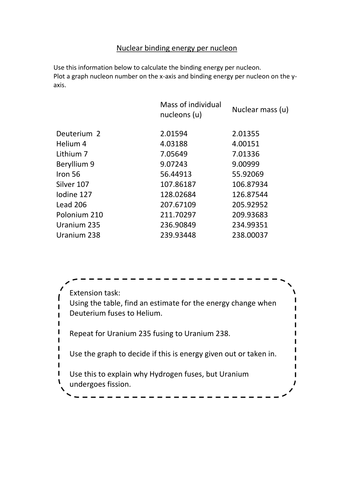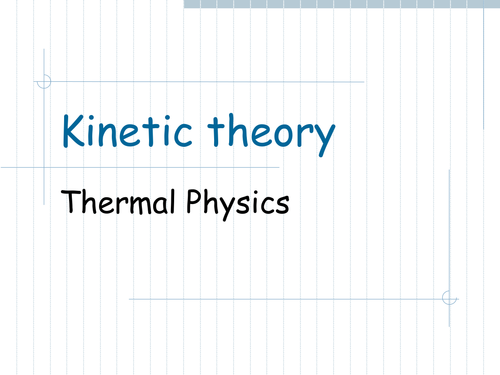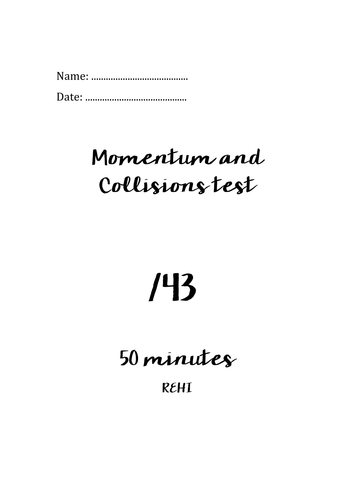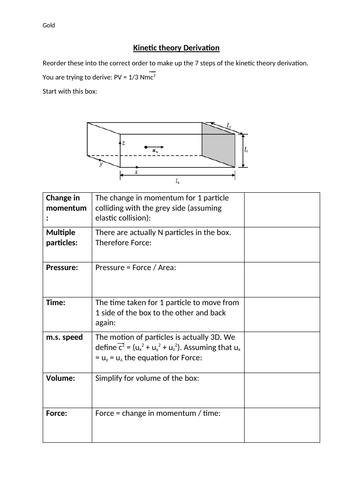
87Uploads
60k+Views
11k+Downloads
All resources

Work, Energy and Power test, OCR KS5 A level Physics
This is a 60 minute assessment made up of past paper questions from the OCR Physics A - H158, H558 course.

Simple Harmonic Motion SHM definitions pendulum bob
Student cut out and create a pendulum bob on cardboard, then fill in the definitions to help them remember everything they need to know about pendulums!

Binding energy per nucleon graph task
Students calculate the binding energy per nucleon, then plot this on a graph to give them a binding energy per nucleon vs nucleon number graph.
This activity allows students to practice using the binding energy conversion between 1u and MeV, or E=mc^2. It also allows them to find the shape of the graph themselves.
It comes with an answer sheet.

Radioactivity word loop game questions
Give each student a card. Each card has an answer at a the top, and a question at the bottom. One student reads out their question, and whoever has the answer reads out the answer and the next question. Keep going until you get back to the first student.
This is a great plenary, or starter for the next lesson.
Alternatively, Give the whole pack to one student, and see if they can match them all up to make a big circle.
This one is for the GCSE Physics radioactivity topic.

Power energy time equation question cards
Differentiated Quiz cards on the Power, energy time equation.
E=Pt.
Lots of practise questions.
These come in two levels, foundation or higher. Higher includes conversions between units.

Make your own question sheet - I moustache you a question
A silly worksheet.
Step 1: write questions on each moustache.
Step 2: write the answers on each nose.
Step 3: swap, cut out the moustaches and match them up!

Le Chatelier's Principle
A worksheet on Le Chatelier's principle. Students have to describe what the diagrams show.

Resonance and damping worksheet
Differentiated worksheet on damping and resonance in pendulums.
Questions are presented in a grid, with difficulty in columns and topics in rows.
Students have to choose one question from each column, but can choose their own level of difficulty.

Electromagnetic EM Spectrum differentiated task
A worksheet asking students to make a poster, including success criteria making it differentiated.

Kinetic theory of gases derivation
A powerpoint working through the derivation of pressure and kinetic theory equation of gases.
This can be quite complex, so the powerpoint works through step by step to make this easier.

Latent heat of fusion
My lesson on latent heat of fusion. Talks students through this, and includes some questions

Forces word loop game
A word loop game on forces.
Turn them into cards, and them out one per student (this is for 21 students). One person reads out a question, the student with the corresponding answer reads out the answer and their question etc. until you get back to the start.
Great as a plenary or recap starter.

Famous scientists posters
12 posters including pictures and quotes from different scientists.
I hand these out to students so that they can add information about the scientist around the quote, then laminate and display.
Lots of female scientists included, of course!

Stationary / Standing waves
My lesson on introduction to stationary / standing waves.
Talks students through the start of the topic, including asking them to draw waves moving in opposite directions to describe how they are formed.

Momentum and collisions OCR KS5 A level Physics
This is a 60 minute assessment made up of past paper questions from the OCR Physics A - H158, H558 course.
A level Physics topic Momentum and collisions.

Silent debate questions on cloning and genetic testing
Print these on A3 paper. Place them round the room.
Students can visit each one, read what people have written, and write their own ideas and opinions down.
They make a great display when they're finished.

Synoptic Question dice for A-level Physics
A set of dice for making synoptic questions. Print on card, give A-level Physics students 2 dice each to build. When finished, they should roll the dice and write a question combining the two topics. They can then roll again!
It’s a great way of getting them into the head of the examiner and preparing them for questions pulling from lots of different topics.

Kinetic Theory Derivation
Deriving the PV = 1/3 Nmc2 equation in 7 simple steps.
Pupil either follow the rules to derive the equation, or (for higher level challenge) reorder the steps, then fill them in.
This is a derivation that they are required to know and this is designed to simplify a complex idea!
Please review.




















